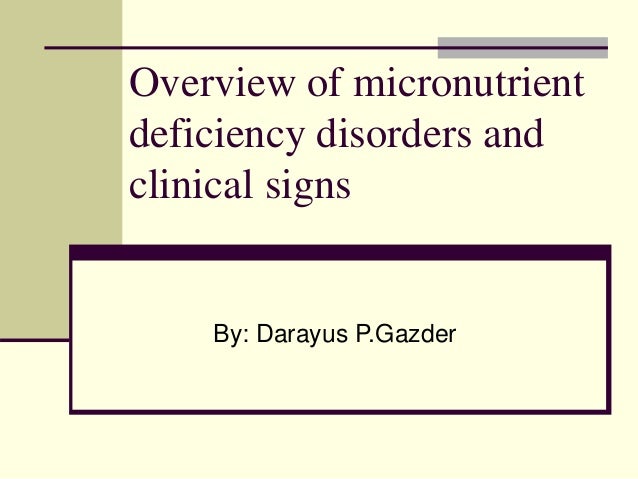Daily micronutrient requirements for HPN are listed under Q1 and Tables 1 and 2 but higher doses may be necessary when there are abnormal intestinal losses such as post surgery. 07082020 Micronutrients should be provided routinely to all pediatric patients receiving HPN.
Micronutrient Deficiency Our World In Data
Patients are typically supplemented with micronutrients during PN.
Micronutrient deficiency in pediatrics. 21082018 Studies were reviewed and included based on the strength of research methods. Therefore we strongly recommend supplementation of more vitamin D and trace elements zinc copper and phosphorus under regular monitoring during long-term intestinal rehabilitation. 09072019 Ninetysix percent of children had 1 micronutrient deficiency and 39 had 3 micronutrient deficiencies.
Since parenteral nutrition became an established therapy micronutrient deficiency syndromes are being identified more frequently and emphasize the importance of a complete nutritional support. Age 10 yr p 0002 and tube feeding p 002 were significant risk factors for micronutrient deficiencies. Data on the prevalence of micronutrient deficiencies in pediatric patients with IBD and risk factors for micronutrient deficiency in these patients were extracted from included studies and compared and discussed in preparation of the proposed guidelines and manuscript.
Iron deficiency in Jewish children from a new immigrant town. Abstract Data regarding micronutrient deficiencies in children with cancer are lacking. A total of 39 studies were included in the final review.
24102020 Micronutrient deficiencies remain a common problem in pediatric SBS through intestinal rehabilitation. However the risk of deficiency may persist even after a successful transition to FEN. Dietary intake did not correlate with micronutrient deficiency status.
Pediatric Micronutrient Deficiencies Epidemiology and prevention I. Micronutrient deficiencies dr Shambhavi 2. The prevalence of micronutrient deficiency was 952.
Introduction principles and iron deficiency Drora Fraser. Data on the prevalence of micronutrient deficiencies in pediatric patients with IBD and risk factors for micronutrient deficiency in these patients were extracted from included studies and compared and discussed in preparation of the proposed guidelines and manuscript. The potential for micronutrient deficiencies stresses the importance of early recognition of the disease and reinforcement of the gluten-free diet GFD by health care providers.
Deficiencies of fat-soluble vitamins iron and zinc are particularly common but deficiencies of other water-soluble vitamins minerals and trace elements also may be found varying with the region and chronicity of the malnutrition. Iron deficiency anemia in infants from southern Israel. 16052014 There were several reports on nutritional deficiencies in specific regions in Israel including iron deficiency in children from central regions such as Hadera.
Anemia in Jewish and Arab children from Akko. Since parenteral nutrition became an established therapy micronutrient deficiency syndromes are being identified more frequently and. We measured micronutrients in a subset of children with cancer n.
22012018 Micronutrient deficiency in pediatrics 1. It is difficult to demonstrate micronutrient deficiency because the symptoms are varied and laboratory analyses are limited. In resource-limited settings micronutrient deficiencies are common in any child with severe acute malnutrition.
The proportion of patients with at least one vitamin and one mineral deficiency were 778 and 100 respectively. 16052017 This article presents an overview of CD and highlights common micronutrient deficiencies and the associated complications found in pediatric CD. Eightysix percent of children had vitamin C deficiency 87 had 25hydroxyvitamin D deficiency 50 had zinc deficiency and 13 had vitamin A deficiency.
Elements trace mineral and vitamins complex organic molecules. Micronutrient deficiencies Vitamin A deficiency is no longer a public health virtually eliminated More than 90 of household consume iodized salt and IDD is on the way to elimination Prevalence of Iron Deficiency Anemia has been reduced from 78 in 1998 to 48 in 2006. 16052017 Celiac disease CD is an autoimmune enteropathy that occurs in response to gluten ingestion in predisposed individuals.
The goal was to determine the prevalence of and associated risk factors for iron zinc magnesium phosphorus selenium copper folate and vitamins A D E and B12 deficiency in pediatric intestinal transplant recipients after successful. Micronutrient deficiencies form an important global health issue with malnutrition affecting key development outcomes including poor physical and mental development in children vulnerability or exacerbation of disease mental retardation blindness and. Most of these deficiencies occurred in the early months after transitioning to full EN.
06082013 We report a very high prevalence of micronutrient deficiency 952 among pediatric intestinal transplant recipients on enteral nutrition. The common deficient micronutrients were iron 947 and magnesium 905. And iron and folate deficiencies in children from a city in.
The autoimmune response results in. It is difficult to demonstrate micronutrient deficiency because the symptoms are varied and laboratory analyses are limited.
 Nutrition In Children Vitamins Deficiency
Nutrition In Children Vitamins Deficiency
 Implications Of Micronutrient Deficiencies Throughout Lifecycle Blog
Implications Of Micronutrient Deficiencies Throughout Lifecycle Blog
 Definitions Of Various Micronutrient Deficiencies Download Table
Definitions Of Various Micronutrient Deficiencies Download Table
 Pdf Micronutrient Deficiency In Children
Pdf Micronutrient Deficiency In Children
 Micronutrient Deficiencies Are A Major Complication Of Pcm And Promote Infectious Processes Micronutrients Developing Country Micro Nutrients
Micronutrient Deficiencies Are A Major Complication Of Pcm And Promote Infectious Processes Micronutrients Developing Country Micro Nutrients
 Prevalence Of Micronutrient Deficiencies Among Young Children By Age Download Scientific Diagram
Prevalence Of Micronutrient Deficiencies Among Young Children By Age Download Scientific Diagram
 Etiology Of Anemia In Hiv Proportions Of Micronutrient Deficiency And Download Scientific Diagram
Etiology Of Anemia In Hiv Proportions Of Micronutrient Deficiency And Download Scientific Diagram
 Characteristics Of Micronutrient Deficiencies Resulting From Inadequate Download Table
Characteristics Of Micronutrient Deficiencies Resulting From Inadequate Download Table
Preventing Micronutrient Malnutrition A Guide To Food Based Approaches A Manual For Policy Makers And Programme Planners